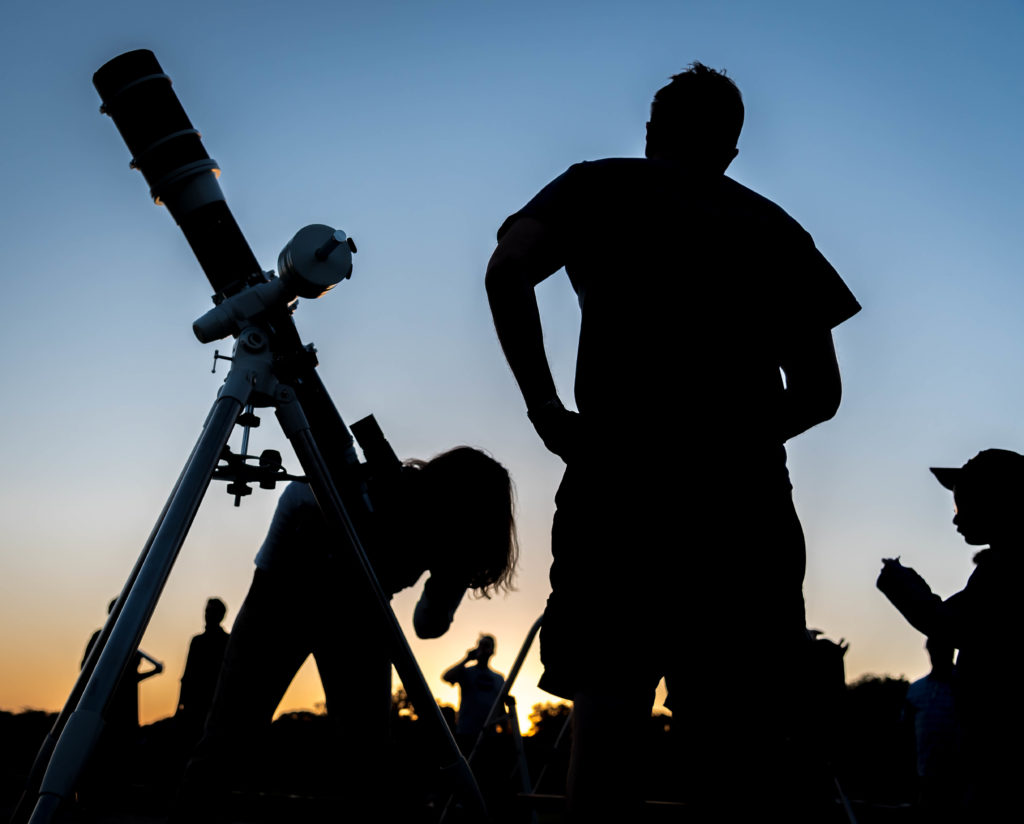
Newcomers to astronomy and casual stargazers are sometimes disappointed by their first glimpses through a telescope, especially when looking at deep-sky sights like star clusters, galaxy, and nebulae. They look through the eyepiece, see a dim smudge without much detail or any color, and conclude that one dim smudge looks like all the others. Some become disillusioned, wonder what all the fuss is about, and take up bird watching instead.
Like most activities, however, looking through a telescope takes a little skill and practice. But once you get the hang of it, you can learn to see an astonishing amount of subtle detail, even in a small telescope. The image of a distant galaxy or star cluster in your telescope will never rival the pro-quality photographs you see in books and magazines. But with a little practice, you’ll learn to observe subtle detail and structure in faint objects that even the best cameras will never capture. Here are a few tips to help you get the best view of ‘faint fuzzies’ through a telescope…
Step 1 – Dark adaptation. Make sure your eyes are dark adapted and conditioned for maximum sensitivity. Avoid bright lights, at least with your observing eye, and use red flashlights for reading your star maps. If there is a lot of stray white light around from streetlights, for example, you can maintain dark adaptation in your observing eye by wearing an eyepatch!
Step 2 – Find your target. The next step is to find what you’re looking for. Whether you star hop or use a go-to mount, find the object with a low-power eyepiece with a wide field of view. Congratulate yourself, step back, take a sip of coffee or water and a few deep breaths. Oxygenate your brain… this will help you see better. Don’t break out the champagne, however, because alcohol quickly impairs your visual acuity.
Step 3 – Take it all in. Now, step back up to the eyepiece. Inspect the object and the stars around it. Is the field of view around the object rich with stars, or is it relatively sparse? What are the colors of the brightest stars in the field of view? Are their any distinctive patterns in the stars that frame the object?
Step 4 – Look for detail. Now look at the object itself. What is its shape? If it’s a galaxy, is it round or elongated? Does the shape change when you use averted vision? Do you see any structure, dark patches or dust lanes? As you look through the eyepiece, tap gently on the side of your telescope to stimulate your eye’s innate ability to detect motion in low-light conditions. And don’t forget to use the ‘magic’ of averted vision in which you use the most sensitive part of your eye!
If you’re looking at a globular cluster, can you resolve individual stars around the edge, or all the way to the core? Again, averted vision will help enormously. Move your eyes right and left, up and down to see which view is best. Does the density of stars dwindle suddenly at the edge, or more gradually? Any color? Shape? Patterns among the stars?
Step 5 – Be Patient. Wait for fleeting moments when the atmosphere steadies. Sometimes you get a few seconds of clear seeing when the object seems to jump out at you in 3D. Now step back from the eyepiece and try to hold in your mind the image of what you have seen. How would you describe what you see to someone else? Continue to examine the object for several minutes to wait for more detail to become apparent.
Step 6 – Adjust magnification. Put in a higher-power eyepiece and repeat the above process. For dim, large-area objects like nebula and face-on galaxies, medium power is good enough. But for tight globular clusters, planets, planetary nebulae, and double stars, work your way up to the highest-power eyepiece you have. Depending on seeing conditions, the optimum magnification may change from night.
Step 7 – Make a Sketch. To develop the keenest attention to detail, try sketching what you see. All you need are a few pencils and a piece of paper. Don’t worry if you can’t draw. Your goal isn’t to produce a work of art. It’s to develop awareness of fine detail. Take a look, sketch a little, take another look, and sketch some more. Perfect this skill, and you will be astonished at what you will see, even with a small telescope. The video below shows you how to make a basic sketch through the eyepiece…
Share This: